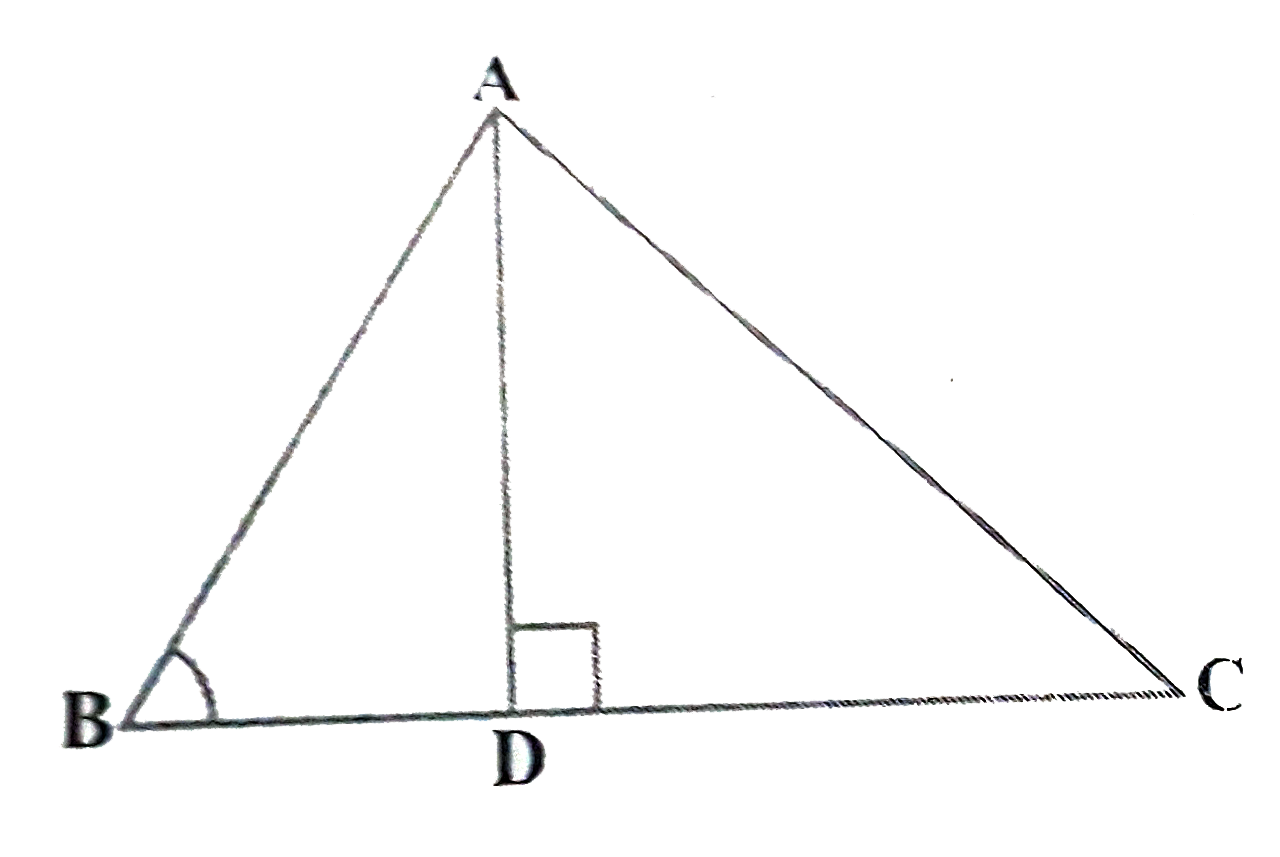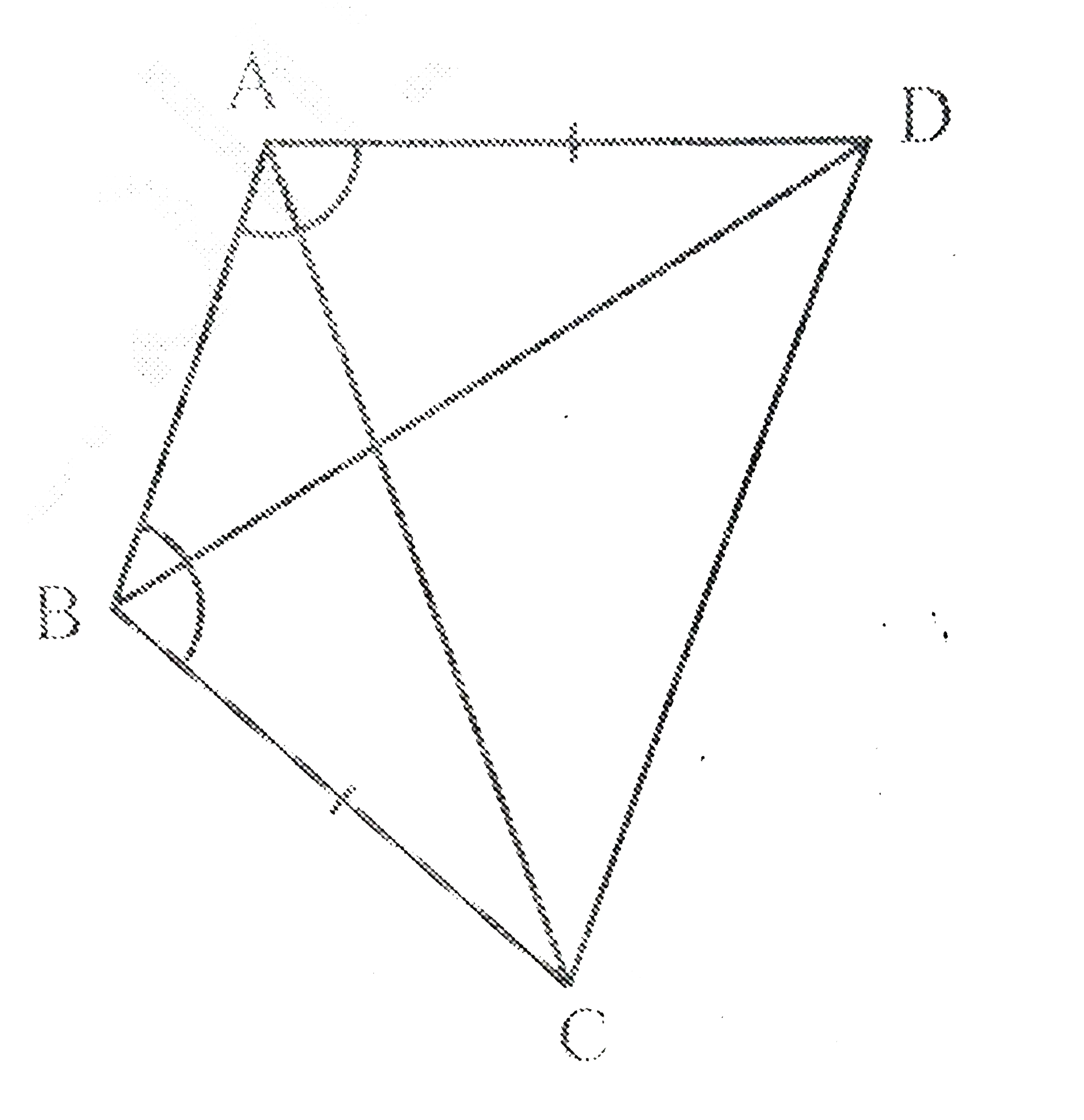If ABCD is a quadrilateral in which ABCD and AD=BC, prove that ∠A =∠B .
To prove that angle A is equal to angle B in quadrilateral ABCD, where AB is parallel to CD and AD = BC, we can follow these steps:
1. Draw the Quadrilateral:
- Start by drawing quadrilateral ABCD with points A, B, C, and D labeled in order. Ensure that AB is parallel to CD.
2. Label the Given Information:
- From the problem, we know that AB || CD and AD = BC.
3. Identify the Triangles:
- Consider triangles ABD and BCD. We will use these triangles to show that angle A is equal to angle B.
4. Use Right Angles:
- Since AB is parallel to CD, the angles formed by the transversal AD and BC at points A and B are right angles (let’s denote them as angle 1 and angle 2). Thus, angle 1 = angle 2 = 90°.
5. Apply the Side-Side-Side (SSS) Criterion:
- We have:
- AD = BC (given)
- AB = AB (common side)
- BD = BD (common side)
- Therefore, by the SSS criterion, triangle ABD is congruent to triangle BCD.
6. Conclude Angles:
- From the congruence of triangles ABD and BCD, we can conclude that angle A = angle B (by Corresponding Parts of Congruent Triangles are Equal).
7. Final Statement:
- Therefore, we have proved that angle A = angle B.
- Start by drawing quadrilateral ABCD with points A, B, C, and D labeled in order. Ensure that AB is parallel to CD.
- From the problem, we know that AB || CD and AD = BC.
- Consider triangles ABD and BCD. We will use these triangles to show that angle A is equal to angle B.
- Since AB is parallel to CD, the angles formed by the transversal AD and BC at points A and B are right angles (let’s denote them as angle 1 and angle 2). Thus, angle 1 = angle 2 = 90°.
- We have:
- AD = BC (given)
- AB = AB (common side)
- BD = BD (common side)
- Therefore, by the SSS criterion, triangle ABD is congruent to triangle BCD.
- From the congruence of triangles ABD and BCD, we can conclude that angle A = angle B (by Corresponding Parts of Congruent Triangles are Equal).
- Therefore, we have proved that angle A = angle B.
Topper's Solved these Questions
Similar Questions
If ABCD is a cyclic quadrilateral in which AD∣∣BC . Prove that ∠B=∠C
View SolutionIn figure, ABC is a triangle in which ∠ABC=90∘and AD⊥BC. Prove that AC2=AB2+BC2−2BC.BD.

View SolutionABCD is a cyclic quadrilateral in which AC and BD are its diagonals. If ∠DBC=550 and ∠BAC=450, find ∠BCD
View SolutionABCD is a quadrilateral in which and∠DAB =∠CBA(see Fig. 7.17). Prove that
(i) ΔABD≅ΔBAC
(ii) BD = AC
(iii) ∠ABD =∠BAC

View SolutionIn a quadrilateral ABCD , ∠B=90o , AD2=AB2+BC2+CD2 , prove that ∠ACD=90o
View SolutionIn Figure, ABCD is a quadrilateral in which diagonal AC=84 cm ; DL⊥AC, BM⊥AC, DL=16.5 cm and BM=12 cm . Find the area of quadrilateral ABCD.
View SolutionABCD is a cyclic quadrilateral in which ∠BAD=750, ∠ABD=580and ∠ADC=770, AC and BD intersect at P. then, find ∠DPC
View SolutionIf O is the circumcentre of △ABC and OD⊥BC, prove that ∠BOD=∠A
View SolutionABC is a triangle in which AB=AC and D is any point in BC . Prove that AB2−AD2=BDCD .
View SolutionIn Figure, AB=AC and DB=DC. Prove that ∠ABD=∠ACD
View Solution
